It’s five minutes to 9 on a cold, overcast January morning in southeast British Columbia’s Purcell Mountains. Myself and fellow ski journo Brian Thacker are standing atop CPR Ridge at Kicking Horse Mountain Resort, staring down a steep chute at the run below us. Much of the terrain is shrouded in clouds, making it tough to decipher snow from sky. Jagged sandstone columns line either side of the nearly 45-degree slope. We’re about to drop into our first run of the day, and I’m rapidly smacking my gloved hands together in an attempt to calm my nerves. Thacker and I call out potential lines down, pointing to thin patches of powder covering interspersed rocks in the terrain and pointing with our hands to draw out the best way forward for the other.
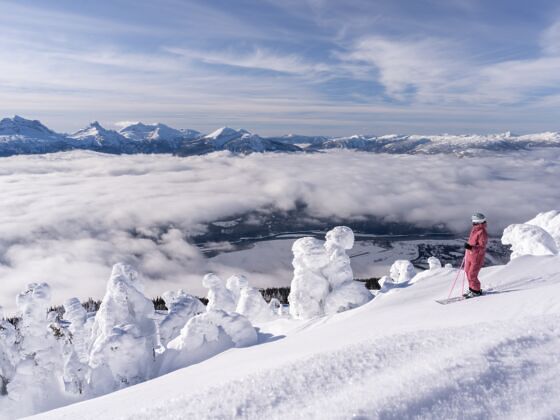

Powder, Passion, and the Pull of the Mountains: An Affair With the Powder Highway
I rock back on my snowboard, then lean forward to drop in. A waft of cool powder greets my face as I carve the day’s first heelside turn just above a boulder. Steep pitches like this allow a rider to really lean into their turns, riding nearly parallel to the mountain, a motion I’ve embraced over the years not just because the move makes me feel like I’m floating, but because it’s an effective way to keep my board in front of me during low-visibility descents – a small measure of security in a situation where the mountain has ultimate control. In this case, the only thing in front me after the initial turn was a steep wall of fluffy snow that yielded perfectly to my snowboard. Seven turns and a straight-line later and I let out a loud “Whooo!” as I ride up to Thacker at the bottom of the run, wearing a wide smile framed by snow.
I’d come to the Powder Highway to challenge myself – and this run epitomized the experience. I’m from Colorado and, call me spoiled or elitist, but I tend to judge ski terrain by how quickly one can get into “the sh*t.” By this I mean, how many lifts do I need to take, or how many hours of skinning must I do, before I’m staring down the top of a steep chute like we’d just ridden, knees rattling, calling out my drop. Like in golf, the lowest score wins. The Powder Highway triumphs in this contest, with Kicking Horse and its neighbor across Rogers Pass, Revelstoke Mountain Resort, boasting easy-to-access steeps and consistently light powder in a setting far less crowded than many of the over-hyped ski resorts south of the border. A properly-planned trip here includes stops at each resort, with time in between for backcountry touring or heli-skiing – and it’s an experience that is impossible to forget.
Embracing challenge – and comfort – at Canada’s home of ‘Champagne Powder’
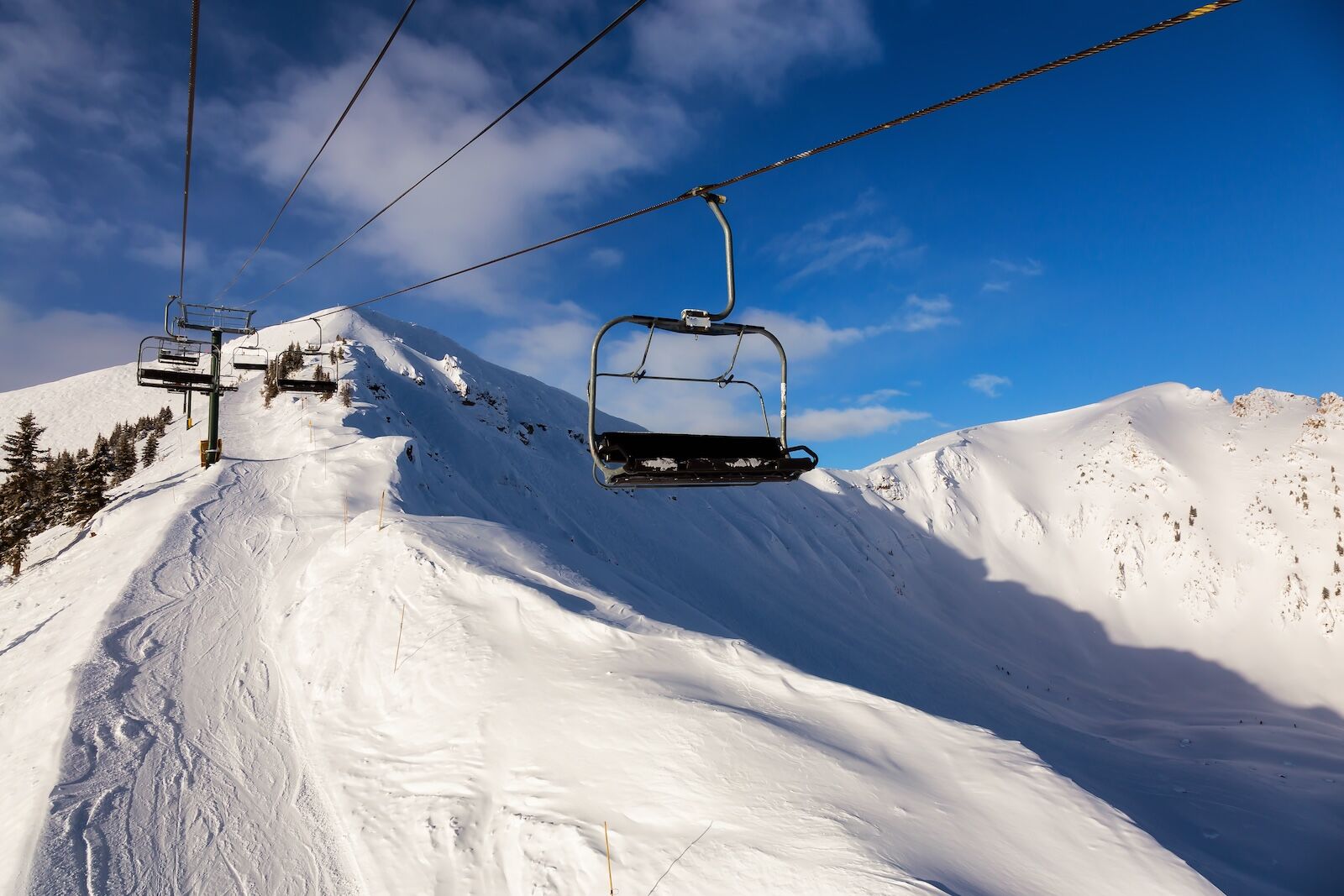
Photo: EB Adventure Photography/Shutterstock
At Kicking Horse, outside the town of Golden along BC’s iconic Powder Highway, in and around the traditional lands of the Ktunaxa, Secwépemc, and Métis First Nations, the answer to my query is a resounding “1.” Ride the gondola up from the base village and you have your pick of dozens of such runs. Add in another lift ride and there are some 85 numbered chutes to choose from across CPR Ridge, the north-facing Redemption Ridge, and east-facing Whitewall in Feuz Bowl. On a great day a skier or boarder might be able to knock out a dozen – making Kicking Horse the best ski resort in North America for those seeking steep, technical terrain. We’d headed out heli-skiing with CMH the day before, and with semi-sore legs Thacker and I knocked out a good seven or eight chutes.
Kicking Horse Mountain Resort boasts some of the most challenging terrain in North America. The resort features an impressive 4,314-foot vertical drop, one of the highest on the continent, and sprawls across 3,486 acres of skiable terrain. With over 120 runs, 85+ inbound chutes, and five massive bowls, Kicking Horse offers an abundance of steep, technical terrain that pushes even the most skilled riders to their limits. Catch it on a powder day and there’s no better place to be.
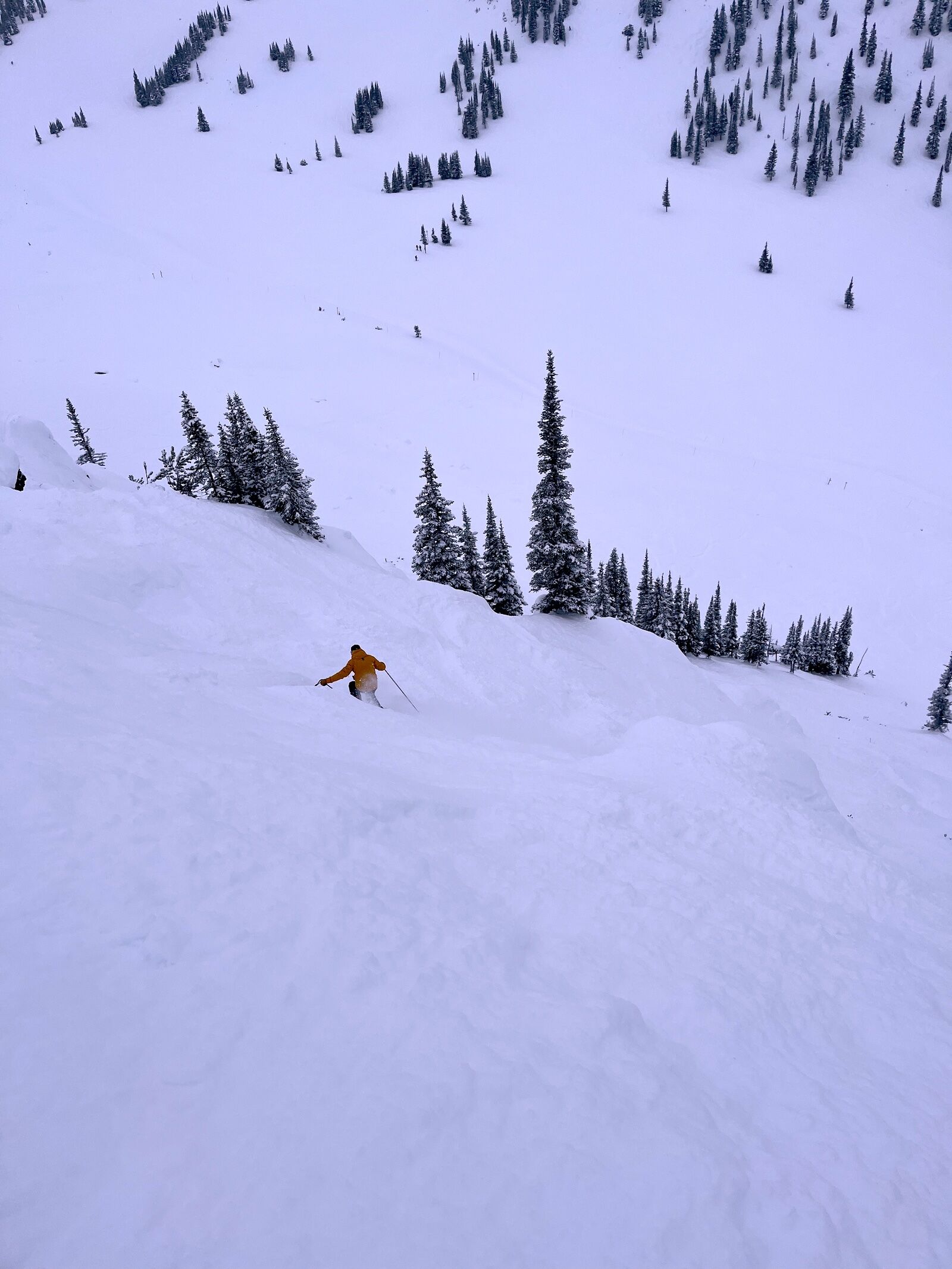
Brian Thacker makes his way down one of Kicking Horse Mountain Resort’s legendary chutes. Photo: Tim Wenger
A staggering 60% of runs are classified as advanced or expert. The resort is renowned for its big bowls, hike-to terrain like the Stairway to Heaven, gladed runs, and consistently dry powder, earning it the nickname “Champagne Powder Capital of Canada”. Compared with major resorts on the Ikon and Epic Passes, Kicking Horse is also nearly empty – over a full day of skiing following a night of new snow, Thacker and I never waited in a lift line for more than a minute or two.
“It’s kind of like controlled backcountry,” Toby Barrett, Kicking Horse Mountain Resort Manager of Revenue and Guest Experience, told me that day over lunch at Eagle’s Eye Restaurant. “You can go pretty much anywhere you can see, and there aren’t too many places like that. We like to say that there’s more than an acre per person.”
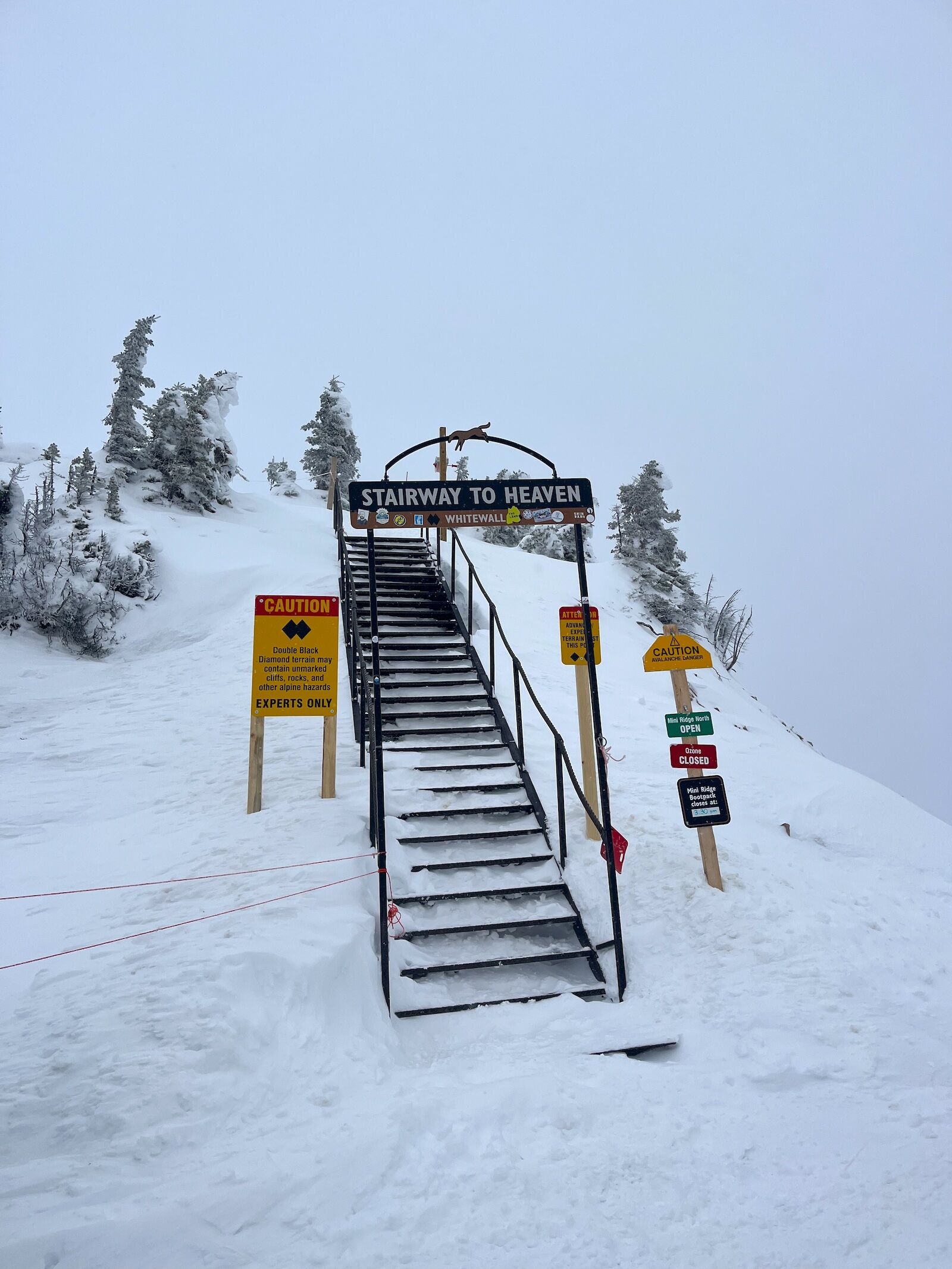
Climb if you dare. Photo: Tim Wenger
Our crew stayed at Glacier Mountaineer Lodge in the Kicking Horse base village. The lodge is a one-minute walk from the Golden Eagle Express Gondola and to the resort’s dining, coffee, and apres scene. Its units range from hotel rooms to spacious three-bedroom suites, with a mountain aesthetic featuring dark wood and leather furniture. The condo units have complete kitchens and gas fireplaces, along with private balconies overlooking the mountain or the Purcells beyond Golden, and in-suite laundry.
Only ding against Kicking Horse is a lack of recycling. On our morning of departure I carried my typical pile of papers and cans around the hotel in search of a recycling receptacle and couldn’t find one. I then carried it over to the base resort’s coffee shop to inquire only to be told that recycling wasn’t available.
Revelstoke celebrates local artists alongside world-class slopes
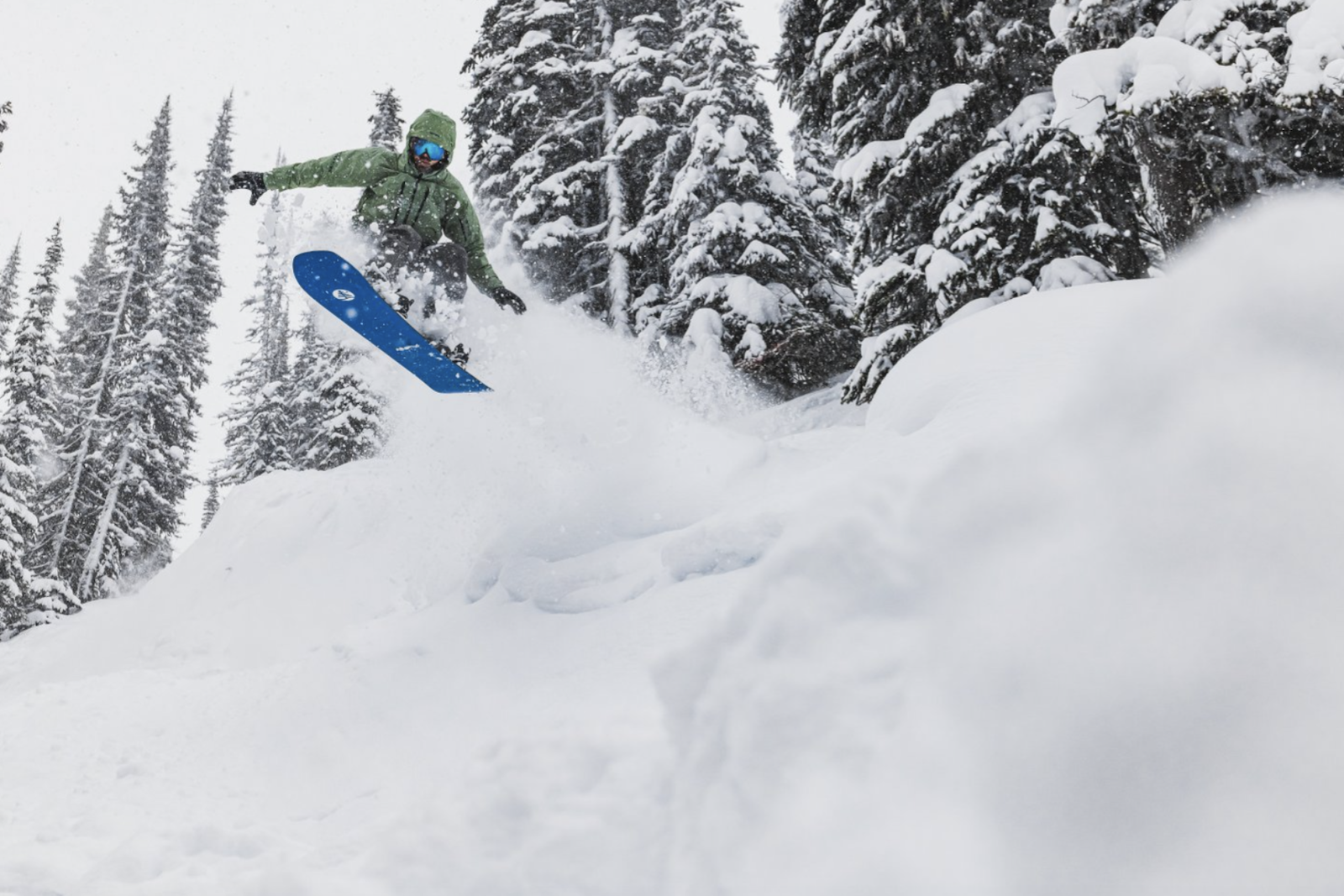
Photo courtesy Revelstoke Mountain Resort
Just over 90 minutes to the east over Rogers Pass, Revelstoke Mountain Resort offers the longest vertical drop in North America – 5,620 feet, a descent that can take you from the sunny, 8074-foot peak of Mt. Mackenzie through an inversion of storm clouds at mid-mountain and into a wintry haven at the base. Skiing here is as close to skiing in a snow globe as one can get. With 3,121 acres of skiable terrain, the resort offers a vast playground for advanced riders, featuring four alpine bowls, 75 named runs, and the hike-to terrain of North Bowl, where I boot-packed for 10 minutes to ride off an area dubbed Sub-Peak through a narrow couloir and into a run called Powder Assault. I’d heard from a few locals at dinner the night before that this was a must-do if conditions allowed, and after an overnight storm the ski patrol opened the terrain around 11 AM.
The resort’s challenging terrain sees an average annual snowfall of 34.4 feet of light, dry “Cold Smoke” powder, creating ideal conditions for deep powder runs and tree skiing. Revelstoke’s expansive gladed areas stretch across the mountain from both The Stoke and Ripper chairs.
Revelstoke is unique in that it offers the high class experience — both on and off mountain — you’d expect from a world class resort, but lacks the pretentious vibes. It’s a pleasant contrast to the resort conglomerates and their $300 lift tickets and $90 parking. Places with such extreme terrain and a laid back vibe rarely offer comfortable resort villages. The result is a compromise on the classic Out Cold conundrum – who is this mountain for? Here, despite growth, it remains for the skiers.
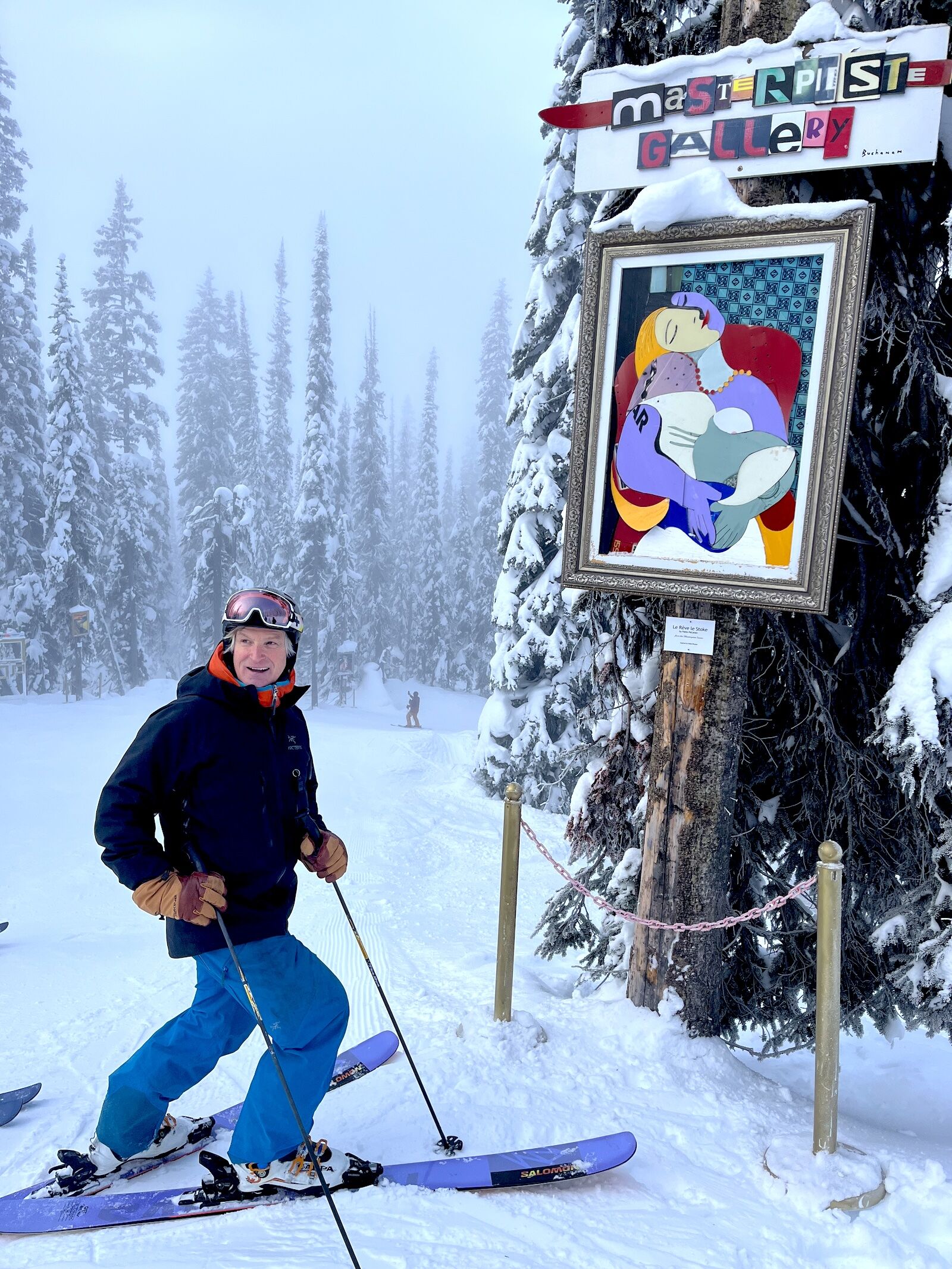
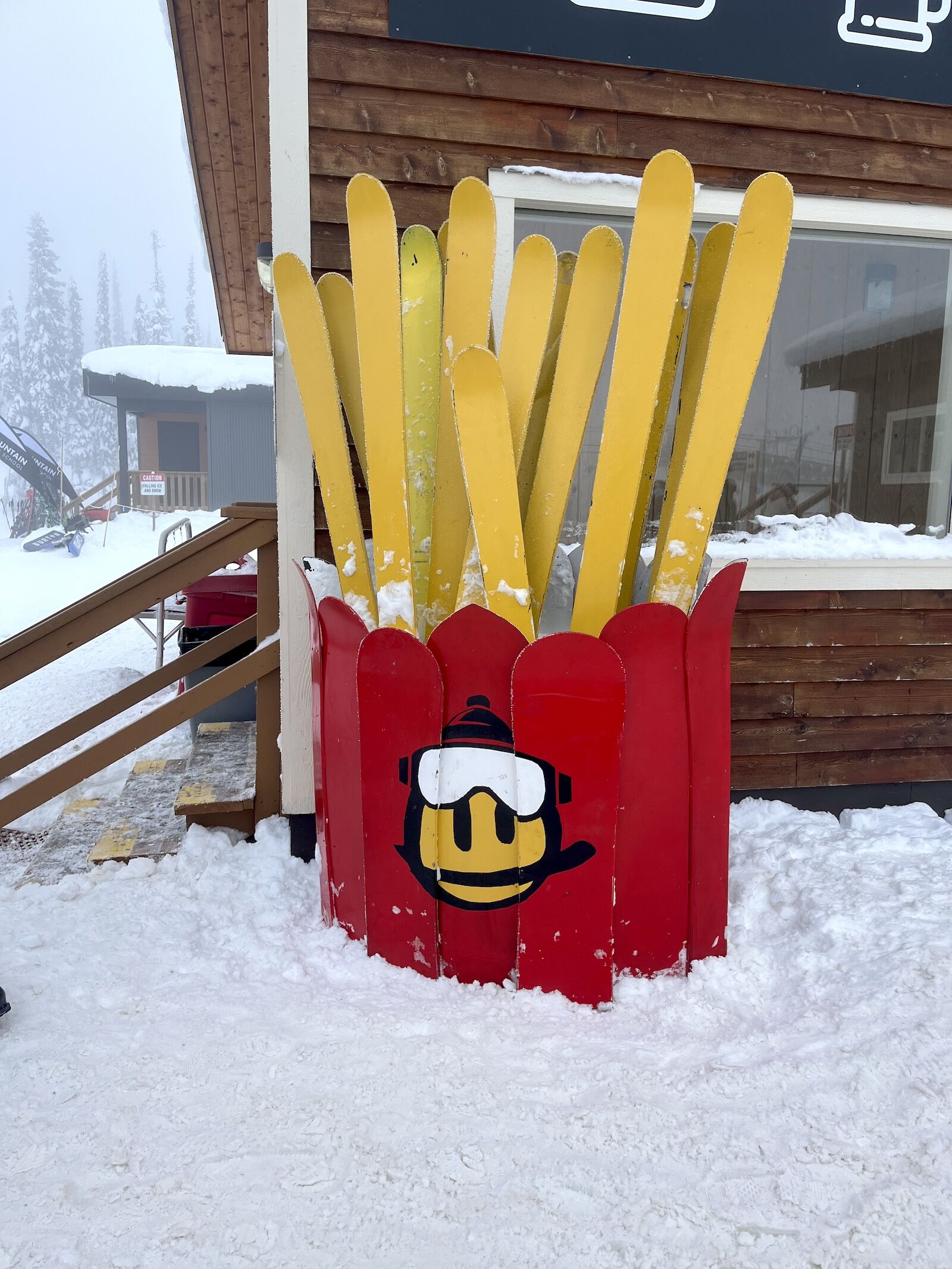
Case in point – ROAM. The Revelstoke Outdoor Art Movement (ROAM) is an innovative on-mountain art project at Revelstoke Mountain Resort that transforms the ski terrain into a unique outdoor gallery. Launched in the 2022-2023 season, ROAM features a series of hidden art installations throughout the resort showcasing nearly 60 pieces across 15 locations, many crafted from recycled ski equipment by local artists. A highlight is the “Masterpiste Gallery,” featuring 22 pieces inspired by famous paintings reimagined with a ski culture twist – there’s “Rebelstoke,” which features paintings of iconic rebels including Che Guevarra and James Dean clad set in mountain town settings, and a retrofit of several Picasso paintings by one “Pablo PiCatski.” I wasn’t able to find them all, even when skiing with reps from the mountain.
Revelstoke’s Art Alleries, launched in 2019, transforms downtown alleyways into vibrant outdoor galleries, maintaining a similar cultural appeal off-mountain. This project intends to revitalize often overlooked urban spaces and showcase nearly 60 pieces by local artists.
One thing that stands out about the Powder Highway is how distinct its towns and resorts are in comparison to many ski resort towns in the US. Both Revelstoke and Golden remain industry towns where tourism is part of the economy, but not the whole thing – just 15 percent of Revelstoke’s 8,500 residents work in tourism or hospitality, with much of the town’s employment stemming from manufacturing and construction (roughly 18 percent), healthcare (over 9 percent), and other industries, according to data compiled by Area Vibes. This hints at a more economically sustainable future for the Powder Highway, in comparison to towns like Aspen and Vail, Colorado, where second-home buyers and short-term rentals have driven housing costs so high that even measuring such data is nearly impossible without taking into account metrics for an entire county or beyond, because the people who work in the resort towns can’t afford to live there.
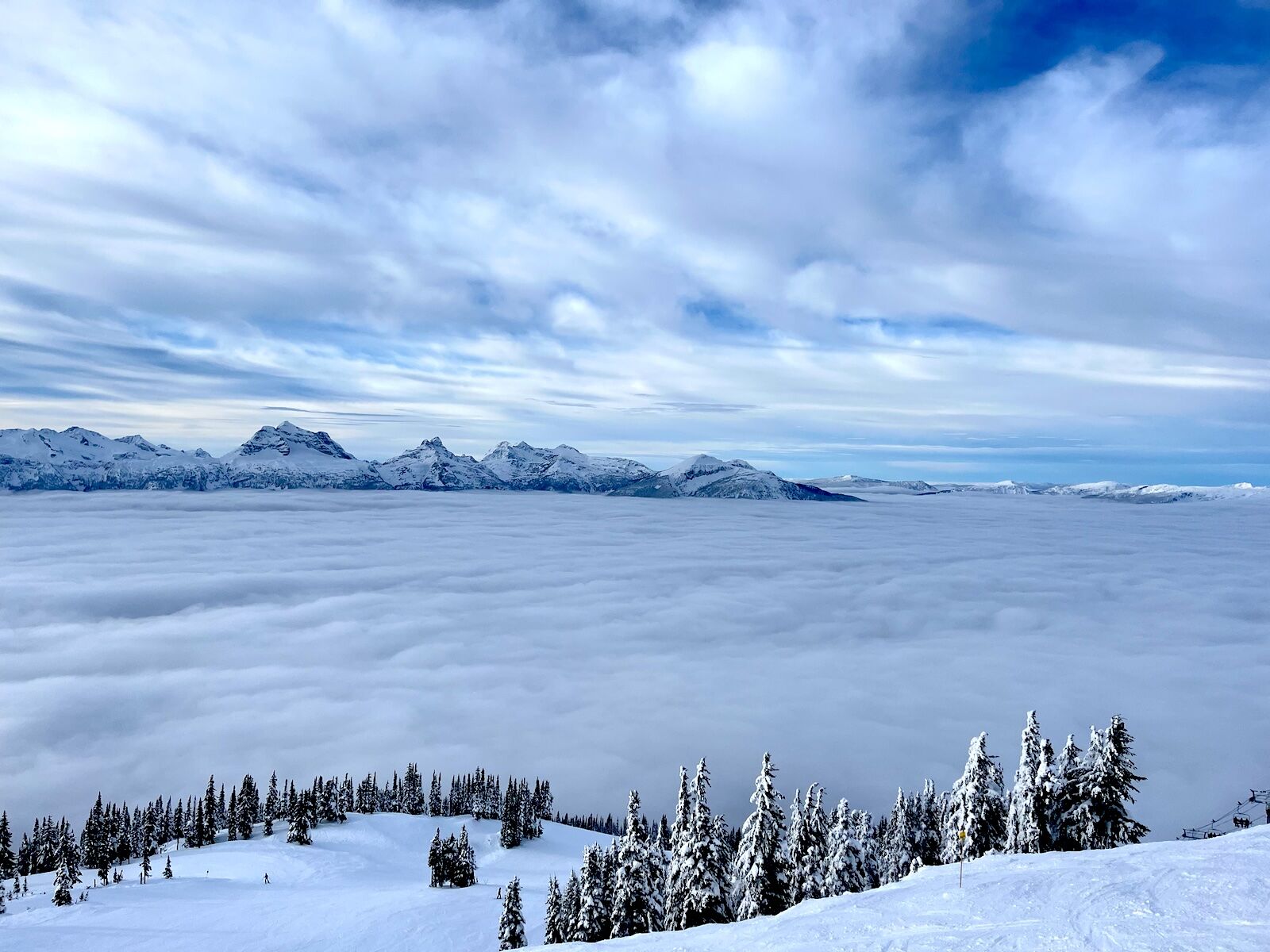
The iconic Revelstoke inversion as viewed from above, at top of The Stoke chair. Photo: Tim Wenger
This economic resilience and authenticity set the Powder Highway apart, not just in terms of sustainability but also in the character of the experience it offers. Here, the connection to the mountains feels more personal, less commercialized—a place where skiing isn’t just an industry but a way of life. Ask a dedicated skier or snowboarder to describe their favorite day on the mountain and their response is likely to draw parallels to romance. In particular, to teenage flings that, however brief, birthed nostalgia that cuts so deep the awkward smiles and halted maneuverings of young love are remembered as triumphant encounters foundational to one’s sense of self. 30 years on, the perfect powder day still hits me like that. When in the moment, carving a slope of untracked powder and navigating terrain hazards is a lesson in instinct, guts, and poise, something that can be shared with others but whose experience is entirely personal. The Powder Highway is a nostalgic place for me, then – like a crush you met traveling and never saw again. You want to say to your riding partner on the gondola at Kicking Horse or in the heli at CMH, “Do you feel it too?”
But instead you say nothing, and she’s already gone. Because despite the fact that you could forget everything and move here, you must maintain some semblance of responsibility to your life back home. You leave hoping to get the chance to ride another line, to satisfy that ceaseless lust before it forever becomes the one that got away.